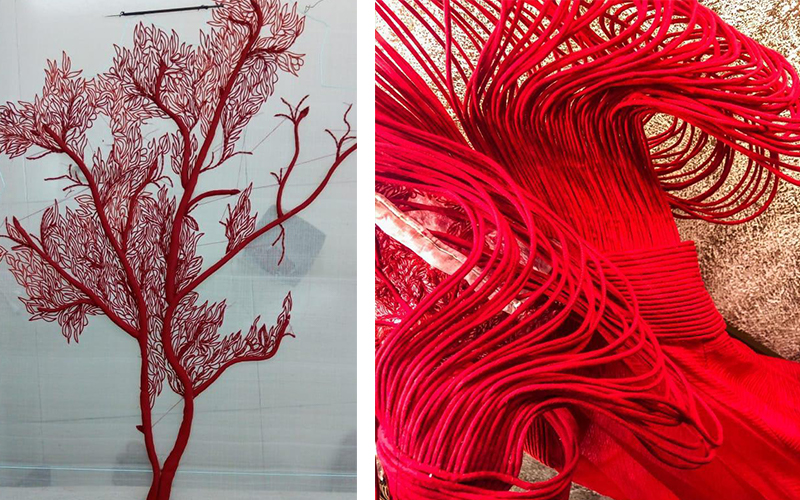Vaishali S celebrates the prowess of hand woven with textures inspired by natures resilience
By Asmita Aggarwal
What Vaishali S has attempted to do with her label is give a global language through the medium of beautiful, Indian hand woven fabrics. This time, even though she has used a palette of whites and reds, she believes, the rainbow will be back soon.
With this hope, she began her LMIFW SS21 line, inspired by both the wrath and forgiveness of nature, how it controls every sphere of our lives, knowingly and unknowingly. For me, the inspiration has always been nature, its boundless energy and the purity it stands for, it becomes the ignition point. Regardless of what is happening, nature is my source of inspiration and what helps me keep my balance and also constantly curious, she explains.

She sees everything through the eyes of Mother Earth and its inbuilt ability to heal itself, which is portrayed through the mother-daughter bond. In both my weaves and silhouettes, you will be able to see a graphic pattern inspired by different elements of nature in every collection (mushrooms, corals and tree barks), but also the flow of energy that resides in it. They all speak of this rhythm, the one you can subtly perceive everywhere, she adds.
Vaishali believes metaphorically and literally fashion needs to get back to slower movements that follow the sequence of seasons. It is impossible to think and align to summer clothes that need to be sold in winter. Fashion has to go back to the tried and tested ways which worked in the past, with natural upcycling. The fast fashion convention of aligning a collection to the next season, really hampers the ability to be in sync with nature, she explains.

For Vaishali, staying rooted is imperative, and what helps her innovate is the fact that there is so much scope of exploration with just one element at hand. The visual spectacle changes every single time, I look at that one facet of nature and its diversity allows me to weave a different story each time, she says. The market keeps on changing, so the important thing is to be able to anticipate changes and adapt. As much as cash crunch and decreased sales are a problem in periods like these, excess demand and unavailability of ordered stocks are the other side of the coin. As far as craftsmen are concerned, we try to supply them with material, so that their livelihood is not completely disrupted. To some clusters, we have doubled the remuneration, she explains.
As for the future, digitalisation is here to stay, but as widespread as it is now, she believes Indians love to see and touch things before buying. The virtual web has widened the reach, certainly, but has lowered the relationship-building and the transfer of the culture of the brand too.

